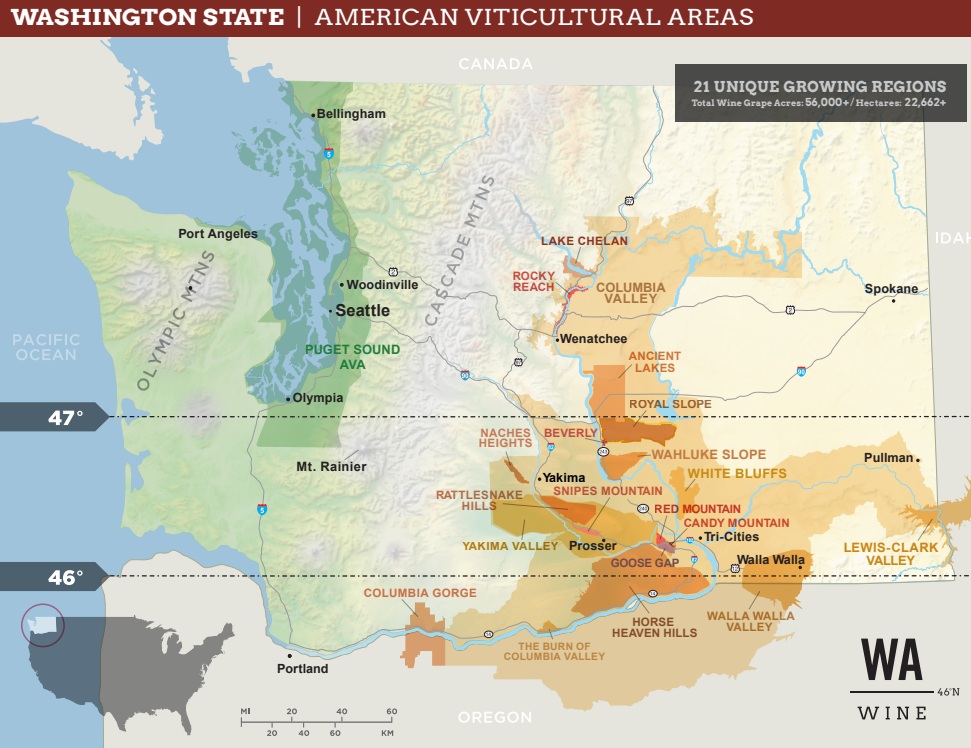Washington Wine Production
24,000 Hectares
(61,000 Acres)
155 million Litres
1,050+ Vineries
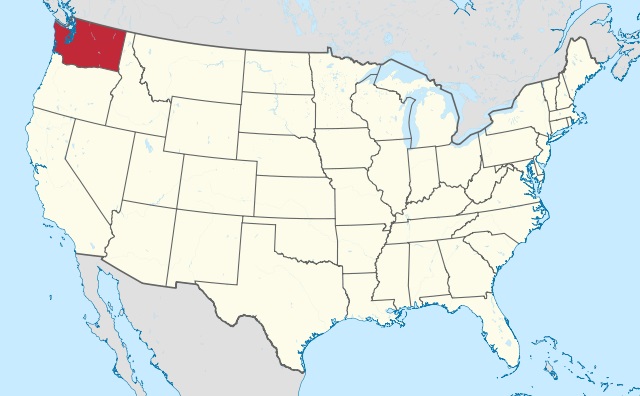
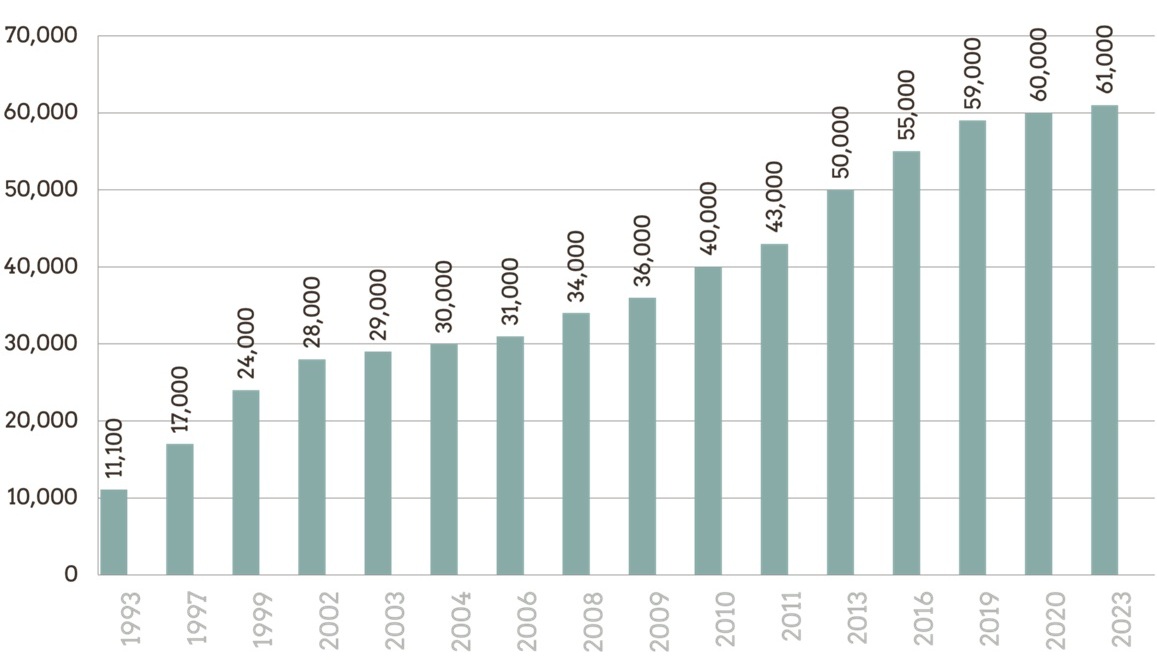
Geography and Climate
Located in the Pacific Northwest, Washington is one of the premier wine regions in the United States, renowned for its diverse climates, distinct terroirs, and high-quality wines.
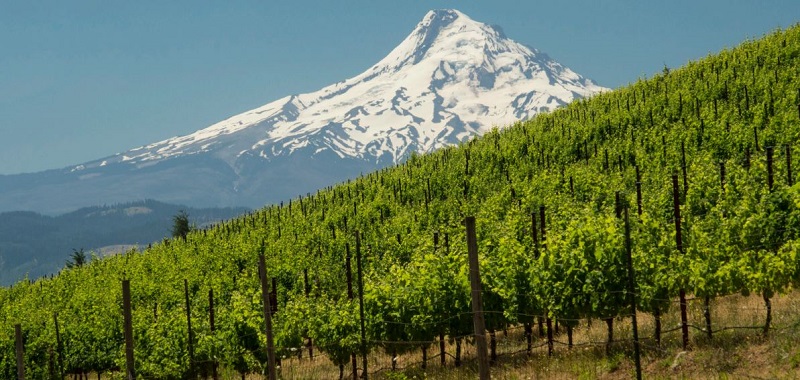
The majority of Washington's wine production (99.9%) is centered east of the Cascade Mountains, where arid conditions, abundant sunshine, and well-drained soils create ideal conditions for viticulture.
This side of the mountains has 300 days of sunshine a year (Compared to 250 days in Napa Valley).
Viticulture is influenced by long sunlight hours (two hours a day more than California in the growing season) and consistent temperatures.
The rain shadow of the Cascade Mountains leaves the Columbia River Basin with around 6-8 inches (150-200 mm) of annual rain fall, making irrigation and water rights of paramount interest to the Washington wine industry.
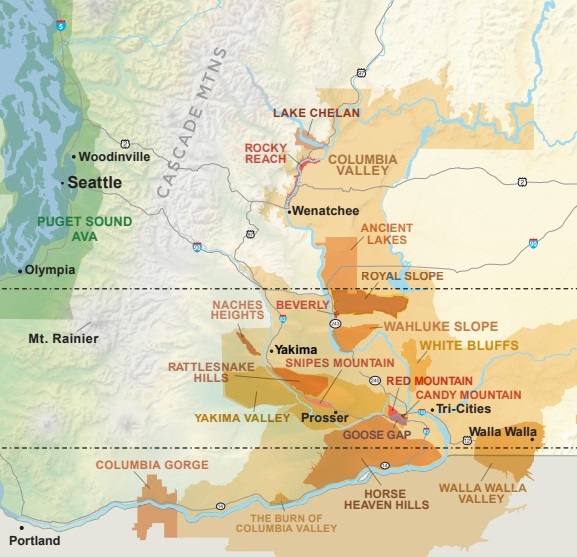
The majority of the vineyards are in the Columbia Valley, benefiting from a dry climate with hot summers and cold winters. The Cascade Range shield this area from Pacific Ocean influences, ensuring minimal rainfall and controlled irrigation from the rivers Columbia, Yakima, and Snake.
Irrigation
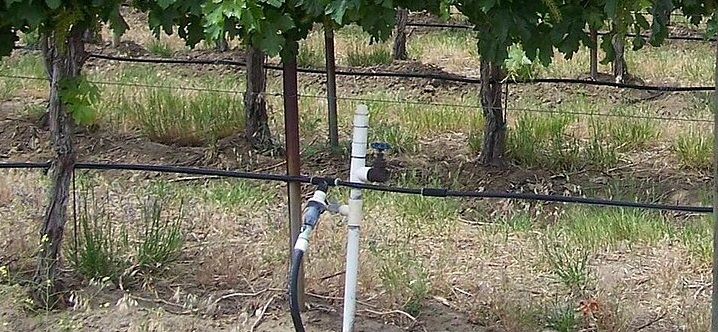
The rain shadow of the Cascade Mountains leaves the Columbia Valley with some areas receiving less than 6 inches (150 mm) of annual rainfall.
The development of intricate irrigation systems has allowed this area to become a premium grape growing region.
Using water from the nearby rivers (Columbia, Snake, Yakima, Walla Walla Rivers) growers control the timing and amount of water for the vines. This has a large influence on good yields and fruit quality.
Grapes
Washington's varied topography, rolling hills, river valleys, and plateaus, creates a range of microclimates that suit different grape varieties.
Cabernet Sauvignon, Merlot, and Syrah are the prominent red grapes, known for their rich flavors, balance, and structure. These reds often exhibit ripe fruit profiles with refined tannins.
Chardonnay and Riesling are the prominent white grapes, producing wines with bright acidity and vibrant fruit characteristics. Washington Riesling, in particular, has gained a reputation for its versatility, from bone-dry to sweet styles.
As of 2024, Washington State's wine grape vineyards encompass over 60,000 acres:
| Grape | Acres |
|---|---|
| Cabernet Sauvignon | 20,000 |
| Merlot | 12,000 |
| Charnonnay | 7,500 |
| Syrah | 6,000 |
| Riesling | 5,000 |
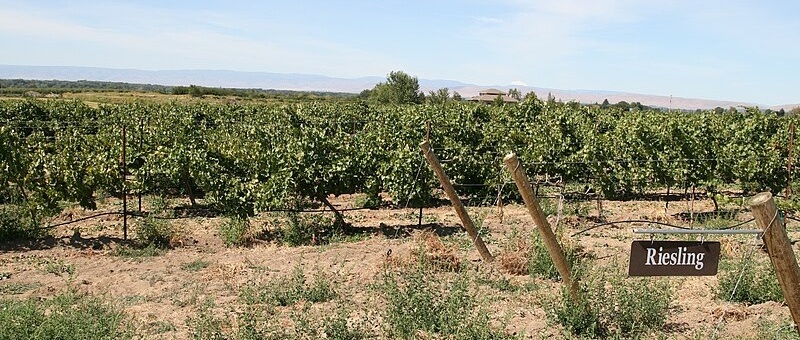
Riesling vineyard in Rattlesnake Hills
Viticultural Areas
Washington has 21 American Viticultural Areas (AVAs).
Below are the most prominent.
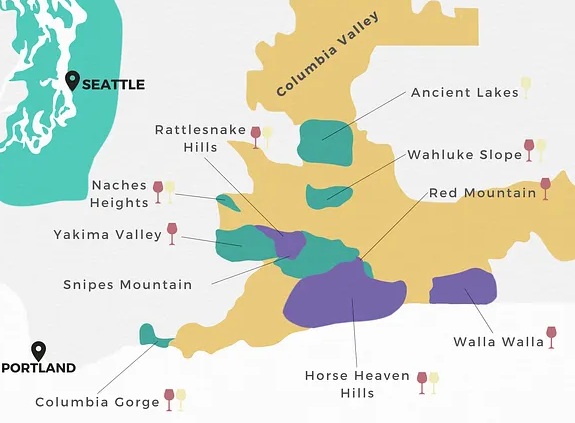
Columbia Valley
Columbia Valley was established in 1984.
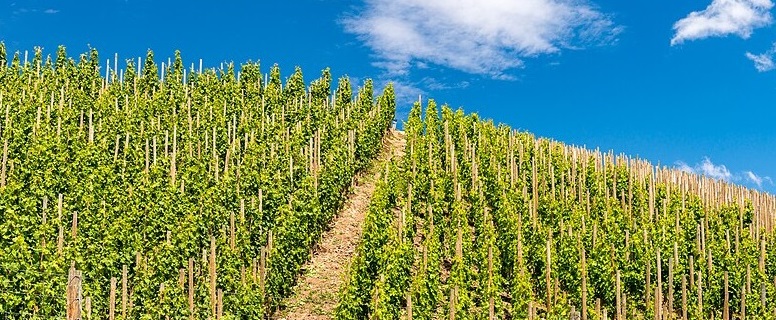
Columbia Valley is the largest AVA in Washington. Almost all of Washington’s wine growing regions are sub-appellations of the Valley.
The Columbia Valley lies in the rain shadow of the Cascade Mountain range. It is a arid dessert region, with continental climate and limited rainfall. Irrigation is therefore required to grow grapes.
However, Columbia River, one of the largest rivers in the country, along with aquifers, provide ample water for grape growing.
The use of irrigation, along with consistently warm, dry temperatures during the growing season, provides growers with a high amount of control over grape development compared to many other regions of the world. This leads to a smaller range of vintage variation and consistently high-quality wines.
Yakima Valley
The Yakima Valley AVA was established in 1983 and is the oldest agricultural region in the state.
The variation in climate and terrain in the valley is reflected in it having multiple sub-appellations. These are Candy Mountain, Goose Gap, Rattlesnake Hills, Red Mountain, and Snipes Mountain.
The top varieties are:
- Chardonnay
- Riesling
- Merlot
- Cabernet Sauvignon
Like most of eastern Washington’s wine regions, Yakima Valley soils are strongly influenced by the Missoula Floods. Moderate to deep silt-loam is layered over gravel or directly onto basalt bedrock. This foundation creates well-drained soils that are ideal for irrigated viticulture.
Average annual rainfall is 200 mm (8 inches).
Walla Walla Valley
The Walla Walla Valley AVA was established in 1984.
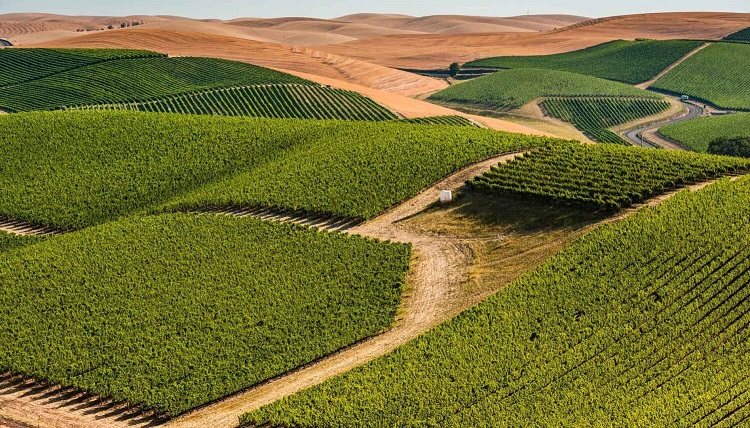
Top varieties are:
- Cabernet Sauvignon
- Merlot
- Syrah
- Cabernet Franc
- Sangiovese
Walla Walla is best known for its bold reds (Syrah and Cabernet Sauvignon).
Most soils are well-drained, sandy loess over Missoula Flood slackwater deposits and fractured basalt. Above 1,200 feet, the maximum height of the Missoula Floods, soils are simply loess over fractured basalt. An cobblestone riverbed defines the area to the south., The area’s famous cobblestones absorb the sun’s heat, radiating it to the roots and grape clusters.
Average annual rainfall is 250-500 mm (10-20 inches).
Red Mountain
The Red Mountain AVA, established in 2001.
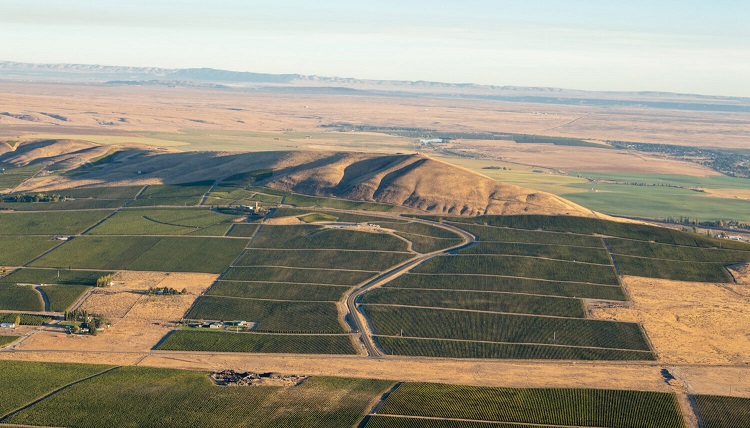
The Red Mountain AVA is the second smallest wine region in Washington.
It is one of the Washington's warmest regions, famous for powerful and structured red wines:
- Cabernet Sauvignon
- Cabernet Franc
- Syrah
- Sangiovese
The Yakima River moderates temperatures and provides airflow, guarding the grapes against frost that can be a problem in nearby areas. Nighttime temperatures can drop to 4°C (40°F). This helps preserving the acid levels in the grapes.
The soil is sandy loam and gravel with a high alkalinity (pH) and a rich calcium carbonate content. Lack of soil nutrients and high pH reduces the vigor of the vines, resulting in smaller berry sizes. This, along with prevailing winds, also leads to higher tannin levels in many of the wines from the region.
Average annual rainfall is 125 mm (5 inches).
Horse Heaven Hills
Horse Heaven Hills AVA was established in 2005.
Located in south-central Washington and part of the larger Columbia Valley, the Horse Heaven Hills AVA is a warm and windy region that is home to over a quarter of Washington’s planted acreage.
The AVA is home to some of the largest and oldest vineyards in the state, producing consistently high-quality grapes, with a focus on both reds and whites.
Top varieties are:
- Cabernet Sauvignon
- Merlot
- Chardonnay
- Riesling
There are three main soil types in the area— windblown sand and loess, Missoula Flood sediment, and hill slope rubble from the Columbia River basalt bedrock. Each of these provides well-drained soils suitable for vinifera.
Average annual rainfall is 225 mm (9 inches).
Wahluke Slope
The Wahluke Slope AVA was established in 2006.
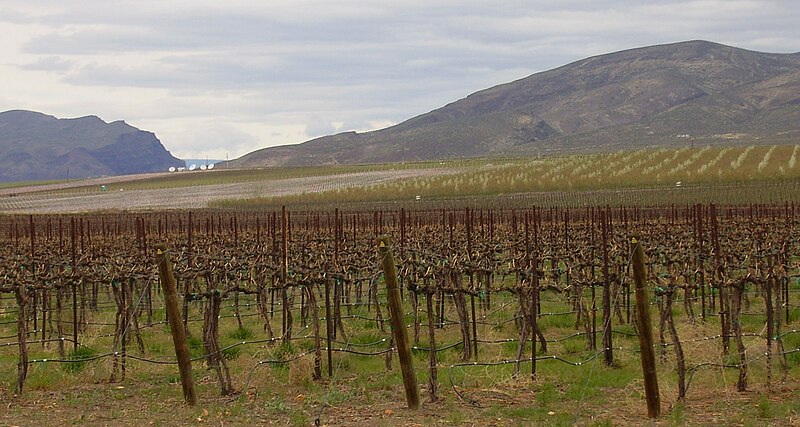
Located on the foothills of the Saddle Mountains, the Wahluke Slope is one of the warmest and driest regions in the state.
More than three-quarters of the production is red wines:
- Merlot
- Cabernet Sauvignon
- Syrah
The Columbia River forms the western and southern boundaries of the AVA, where uniform coarse gravelly sand soils that drain water well.
Average annual rainfall is 150 mm (6 inches).
Rattlesnake Hills
The Rattlesnake Hills AVA was established in 2006.
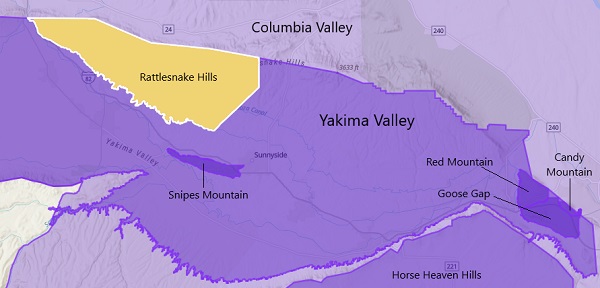
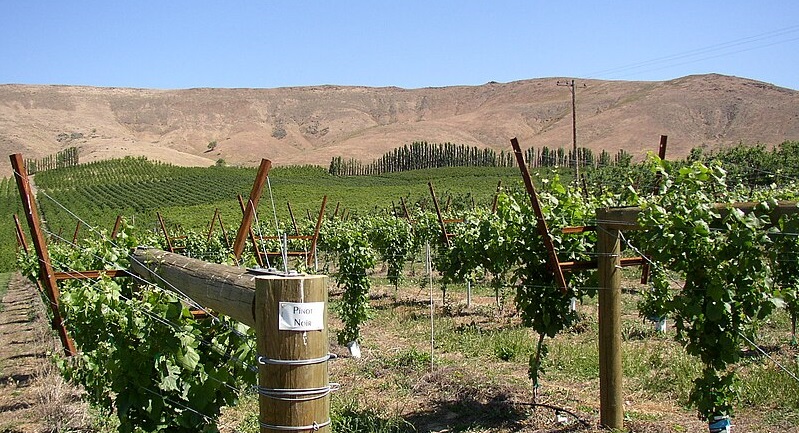
Springtime Pinot Noir grapevines stretch below the Rattlesnake Hills
The Rattlesnake Hills AVA was established after some controversy about whether the terroir of the region was sufficiently different from that of the greater Yakima Valley AVA.
Top varieties are:
- Merlot
- Cabernet Sauvignon
- Syrah
- Riesling
About half of the appellation grows on the Ellensburg Formation sedimentary deposits. This is sedimentary rock formed from the erosion of rock from the Cascade volcanoes. The predominant soil types are silt-loam and loam.
One of the AVA's features is its elevation relative to the surrounding area. Elevations range from 260 meters (850 feet) to 940 meters (3,085 feet), although vineyard plantings are limited to the lower-lying areas to lessen the risk of spring and fall frosts.
Average annual rainfall is 150-300 mm (6-12 inches).
Viticulture and Winemaking
Washington’s long daylight hours during the growing season allow grapes to achieve optimal ripeness.
The state's cooler nights preserve acidity, contributing to wines with excellent balance. Sustainable and innovative practices are increasingly adopted, emphasizing quality and environmental stewardship.
Reputation and Growth
Washington is the second-largest wine-producing state in the U.S., after California, and is recognized internationally for its exceptional quality and value.The region's winemakers combine Old World techniques with modern innovation, crafting wines that rival those from more established regions globally.
